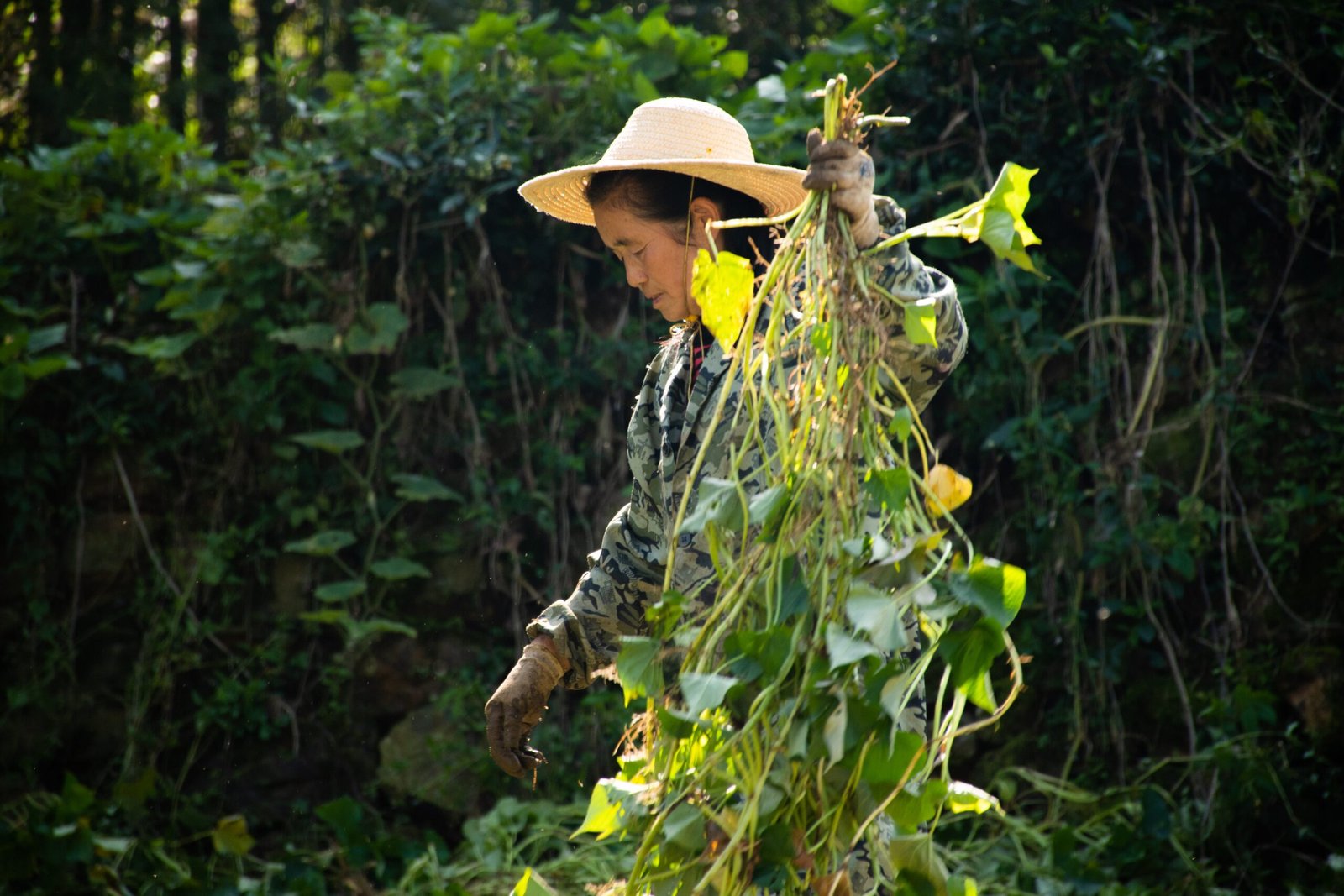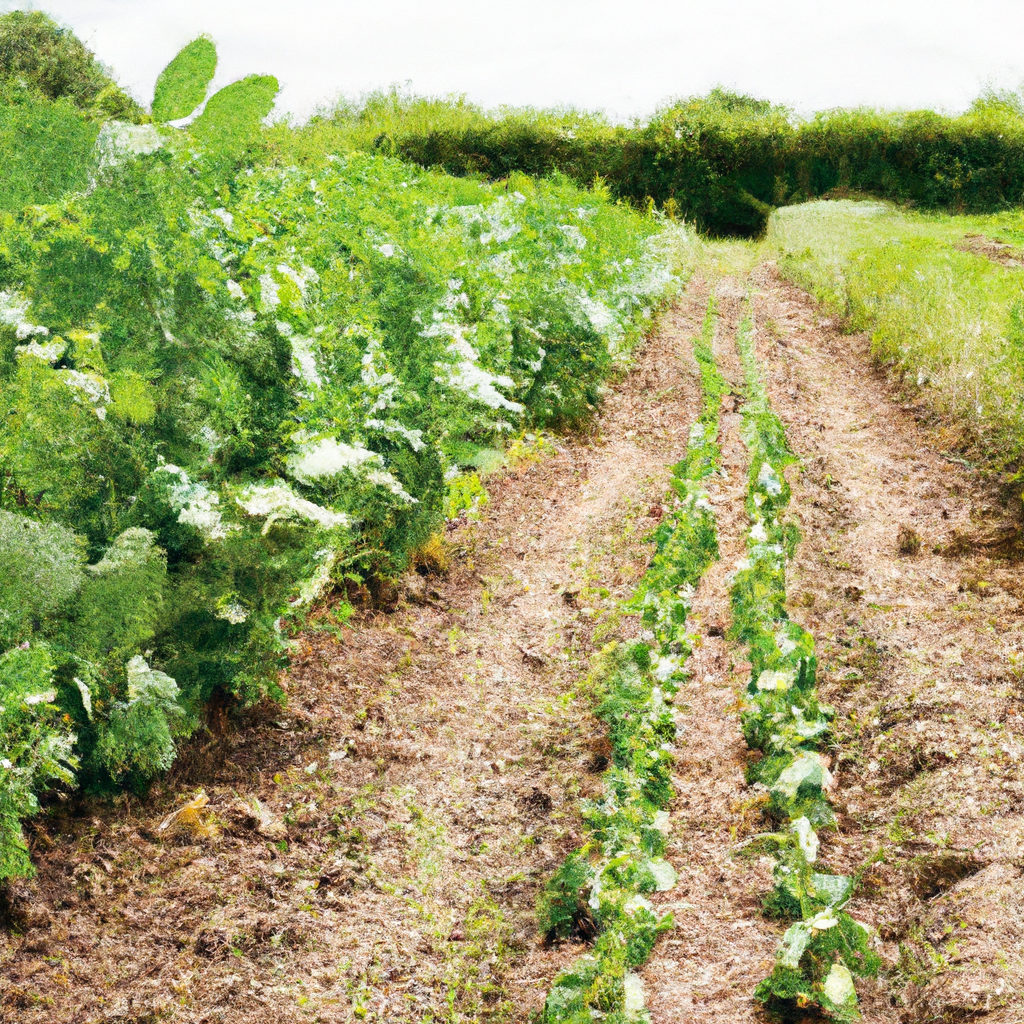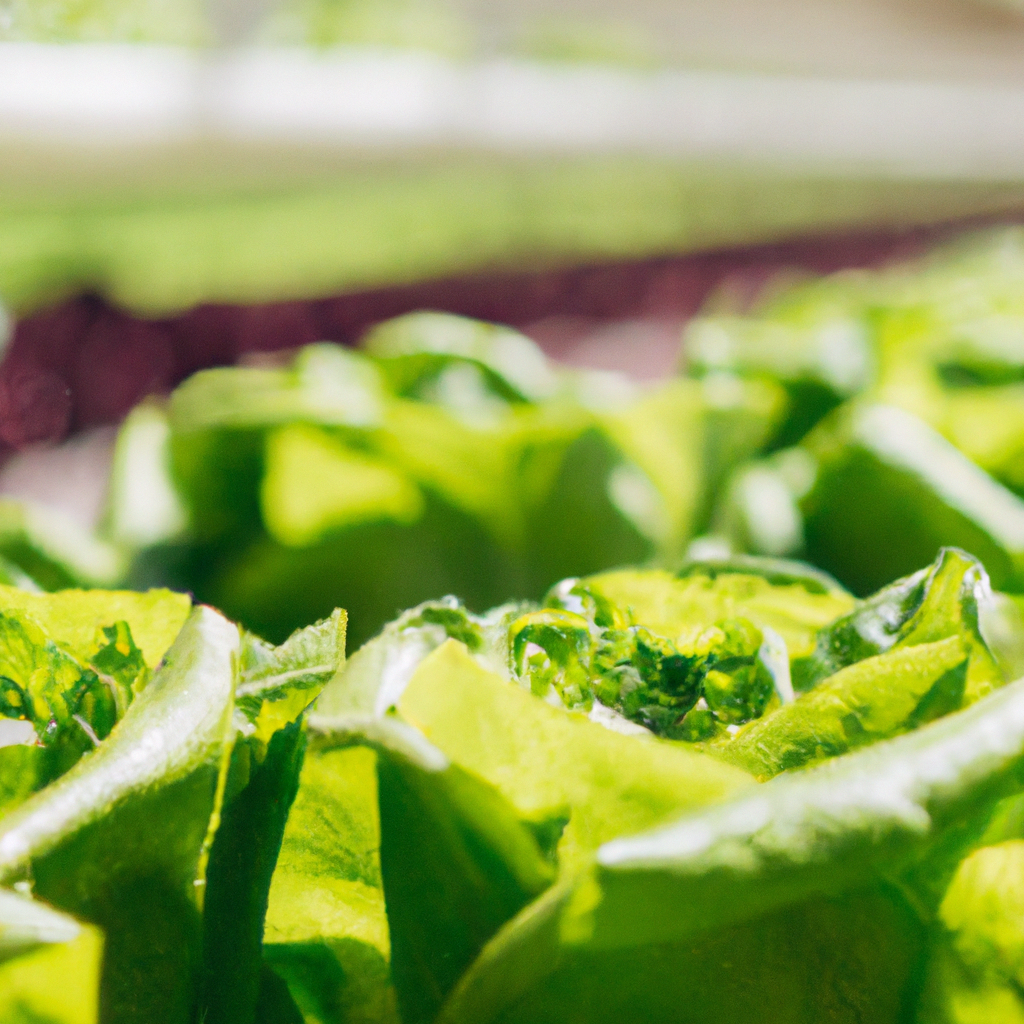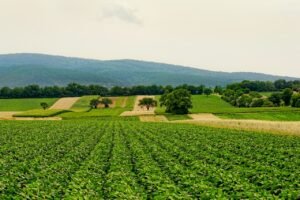
Imagine having a thriving farm that not only yields bountiful crops but also uses water efficiently, helping to protect our precious natural resources. In this article, we explore the fascinating world of sustainable agriculture and the implementation of water-efficient farming techniques. By utilizing innovative practices and technologies, farmers can cultivate their lands while minimizing water usage, leading to a more sustainable future for both our environment and our food production. Get ready to discover how these methods can revolutionize the way we farm and ensure a brighter tomorrow for generations to come.
Sustainable Agriculture: Implementing Water-Efficient Farming Techniques
In today’s world, where water scarcity is becoming a pressing issue, it is crucial to adopt sustainable practices in agriculture. Water-efficient farming techniques play a pivotal role in ensuring the responsible use of this precious resource while still meeting the demands of a growing population. Implementing such techniques not only helps conserve water but also improves the overall efficiency and productivity of farms. In this article, we will explore the importance of water-efficient farming, understand water scarcity in agriculture, discuss the factors contributing to water scarcity, and delve into the benefits of implementing these techniques.

Importance of Water-Efficient Farming
Water-efficient farming is of paramount importance as agriculture is one of the largest consumers of water worldwide. By adopting water-efficient techniques, farmers can optimize their use of water resources and minimize wastage. This approach is critical in areas where droughts are common or water supplies are limited. Water-efficient farming practices enable sustainable agriculture by ensuring that water is used judiciously, allowing farms to continue thriving while also preserving the environment for future generations.
Understanding Water Scarcity in Agriculture
Water scarcity in agriculture refers to a situation where the demand for water exceeds the available supply for agricultural activities. This scarcity arises due to various factors such as population growth, climate change, improper water management, and inefficient irrigation systems. As the global population continues to rise, the demand for food also increases, putting added pressure on water resources. Understanding water scarcity is essential for farmers and policymakers alike, as it helps in identifying appropriate solutions and implementing measures to mitigate its impact.

Factors Contributing to Water Scarcity in Agriculture
Several factors contribute to water scarcity in agriculture. One significant factor is the inefficient use of water in irrigation systems. Traditional flood irrigation techniques result in significant water loss due to evaporation and runoff. Another factor is the lack of access to modern irrigation technologies, particularly in developing countries. Furthermore, climate change-induced droughts and shifts in rainfall patterns further exacerbate water scarcity. Inefficient water management practices, such as over-extraction of groundwater and inadequate water storage systems, also contribute to this issue. Addressing these factors is crucial in ensuring sustainable water use in agriculture.
Benefits of Water-Efficient Farming
Implementing water-efficient farming techniques brings numerous benefits for both farmers and the environment. Firstly, these techniques help in conserving water, reducing water wastage through optimized irrigation systems. This conservation effort can lead to substantial cost savings for farmers by minimizing water pumping and irrigation expenses. Water-efficient farming also enhances crop yield and quality by providing plants with the right amount of water at the right time. Moreover, these techniques promote soil health and reduce soil erosion, leading to better long-term productivity. Overall, water-efficient farming practices contribute to sustainable agriculture and a healthier planet.

Implementing Water-Efficient Irrigation Techniques
Water-efficient irrigation techniques are key to enhancing water conservation in agriculture. Here, we discuss some of the commonly used techniques that significantly minimize water usage while maximizing crop production.
Drip Irrigation Systems
Drip irrigation is a highly efficient technique that delivers water directly to the plant’s roots in small, controlled amounts. This system minimizes water loss due to evaporation and reduces weed growth by targeting water precisely where it is needed. By utilizing a network of tubes and emitters, drip irrigation ensures that plants receive a constant supply of water, resulting in healthier growth and reduced water consumption. This technique is particularly suitable for row crops, orchards, vineyards, and gardens.
Micro-Sprinkler Irrigation Systems
Micro-sprinkler irrigation systems involve the use of low-pressure sprinklers that deliver water in a gentle and uniform manner. This technique is suitable for a wide range of crops, including fruits, vegetables, and ornamental plants. Micro-sprinklers significantly reduce water loss due to evaporation and provide better coverage than traditional sprinkler systems, ensuring maximum water efficiency.
Subsurface Drip Irrigation
Subsurface drip irrigation utilizes buried drip lines placed near the plant’s root zone, effectively reducing water loss through evaporation. This technique is particularly beneficial for perennial crops and landscapes, as it saves water by delivering water directly to the plant’s root system. Subsurface drip irrigation not only conserves water but also reduces weed growth and fertilizer leaching.
Furrow Irrigation
Furrow irrigation involves applying water to shallow channels or furrows between crop rows. It is a widely used and relatively simple irrigation technique, commonly employed for row crops such as corn, soybeans, and cotton. By saturating the furrows with water, furrow irrigation minimizes water loss through evaporation and ensures efficient water distribution to the crop root zones.
Managing Soil Moisture
Efficient soil moisture management is crucial for water-efficient farming. By monitoring and managing soil moisture content, farmers can optimize water usage and prevent any moisture stress on the crops. Techniques such as mulching, which involves covering the soil with organic materials or plastic sheets, help retain soil moisture, reduce water evaporation, and suppress weed growth. Soil moisture sensors and sophisticated irrigation scheduling techniques can also assist farmers in maintaining optimal soil moisture levels, reducing water waste, and promoting healthy plant growth.

Crop Rotation and Water Conservation
Crop rotation is an essential practice in water-efficient farming. By rotating crops, farmers can break disease cycles, reduce pest pressure, and enhance soil health. Additionally, different crops have varying water requirements throughout their growth cycles. By strategically planning crop rotations, farmers can balance water demands and reduce overall water usage. For example, alternating between water-demanding crops and drought-tolerant crops helps in optimizing water use on the farm.
Precision Agriculture and Water Efficiency
Precision agriculture, enabled by advanced technology and data analytics, plays a significant role in improving water efficiency in farming. Using tools like GPS, remote sensing, and yield mapping, precision agriculture enables farmers to precisely apply water, fertilizers, and other inputs based on crop needs. This targeted approach eliminates wastage and ensures optimal resource utilization, leading to improved water efficiency and increased crop yields.

Improving Water Storage and Conservation Systems
Effectively managing water storage and conservation systems is essential for sustainable agriculture. Implementing the following techniques helps farmers conserve water and ensure its availability during water-scarce periods.
Rainwater Harvesting and Storage
Rainwater harvesting involves capturing and storing rainwater for use during dry periods. This technique can be achieved by constructing ponds, tanks, or reservoirs to collect rainfall runoff. Harvested rainwater can then be used for irrigation, livestock watering, and other agricultural purposes. Adopting rainwater harvesting practices helps reduce reliance on groundwater and supplements water supplies during droughts.
Water Recycling and Reuse
Water recycling and reuse are essential practices for sustainable agriculture. Implementing systems that treat and recycle water from various sources, such as animal waste, silage leachate, and runoff, reduces the overall demand for freshwater sources. Recycled water can be used for irrigation, livestock watering, and other non-potable agricultural activities, contributing to water efficiency and sustainability.
Implementing Sustainable Land Management Practices
Apart from water-efficient irrigation techniques, adopting sustainable land management practices further enhances water efficiency in farming. The following practices contribute to soil conservation and improve water-use efficiency:
Conservation Tillage and Cover Crops
Conservation tillage involves minimizing soil disturbance during planting and cultivation, decreasing erosion and water runoff. By leaving crop residues on the soil surface, conservation tillage protects against evaporation and retains soil moisture. Cover crops, such as legumes or grasses, also help in preventing erosion, increasing organic matter content, and improving water-holding capacity. These practices promote healthy soil and reduce water loss, ensuring maximum water efficiency.
Effective Nutrient Management
Efficient nutrient management plays a vital role in water-efficient farming. Excess fertilizer application not only wastes valuable resources but also contributes to water pollution through nutrient runoff. Implementing precision nutrient management based on soil testing and crop requirements can significantly reduce nutrient losses, improve crop uptake, and minimize water contamination. By applying the right nutrients in the right amounts, farmers can enhance water-use efficiency and maintain sustainable agricultural systems.
Integrated Pest Management
Integrated Pest Management (IPM) is an eco-friendly approach that aims to minimize the use of pesticides while managing crop pests effectively. By adopting IPM strategies, farmers can reduce the need for excessive pesticide applications, improving water quality and minimizing the risk of contaminating water sources. IPM focuses on preventative measures, biological control agents, and targeted pesticide use, thus promoting water-efficient and environmentally friendly pest management.
Promoting Agroforestry and Soil Conservation
Agroforestry, the practice of integrating trees and shrubs into agricultural systems, offers multiple benefits, including improved water-use efficiency. Trees and shrubs help in reducing soil erosion, enhancing soil structure, and promoting water infiltration, thereby conserving water resources. Agroforestry systems create microclimates that conserve soil moisture and provide shade to crops, resulting in reduced water needs. This approach contributes to sustainable land management and water conservation in agriculture.
Investing in Research and Development
Investing in research and development is crucial for advancing water-efficient farming techniques further. By supporting agricultural research institutions and funding innovative projects, governments and organizations can accelerate the development of new technologies and practices that promote water efficiency. Research collaborations between farmers, scientists, and industry experts can facilitate knowledge exchange and the adoption of cutting-edge solutions, ensuring continuous improvement in sustainable agriculture.
Role of Government Policies and Incentives
Government policies and incentives play a pivotal role in promoting water-efficient farming practices. Governments can establish regulations and guidelines that encourage farmers to adopt water-efficient irrigation systems and sustainable land management practices. Incentives such as subsidies, grants, and tax credits for implementing efficient irrigation technologies or adopting sustainable farming methods can support farmers in transitioning to water-saving methods. These policies foster a favorable environment for sustainable agriculture and encourage proactive water resource management.
Educating and Collaborating with Farmers
Education and collaboration are essential for widespread adoption of water-efficient farming techniques. Educational programs, workshops, and training sessions can help farmers understand the importance of water conservation and learn about sustainable practices. Collaborations between farmers, agricultural extension services, research institutions, and industry stakeholders promote knowledge sharing, experiential learning, and the development of tailored solutions for specific agricultural regions. By engaging with the farming community, we can foster a culture of water efficiency and enable the widespread adoption of sustainable agricultural practices.
Conclusion
Water-efficient farming techniques are vital for ensuring the sustainability of agriculture in the face of water scarcity. By understanding the importance of water-efficient farming, addressing the factors contributing to water scarcity, and implementing various irrigation, soil management, and land conservation practices, farmers can enhance water-use efficiency, reduce environmental impact, and improve overall farm productivity. Governments and organizations must also play their part by supporting research, implementing favorable policies, and encouraging collaboration to create a sustainable future for agriculture. By embracing water-efficient farming techniques, we can contribute to the preservation of our planet’s most valuable resource – water – and secure a resilient and prosperous future for generations to come.







